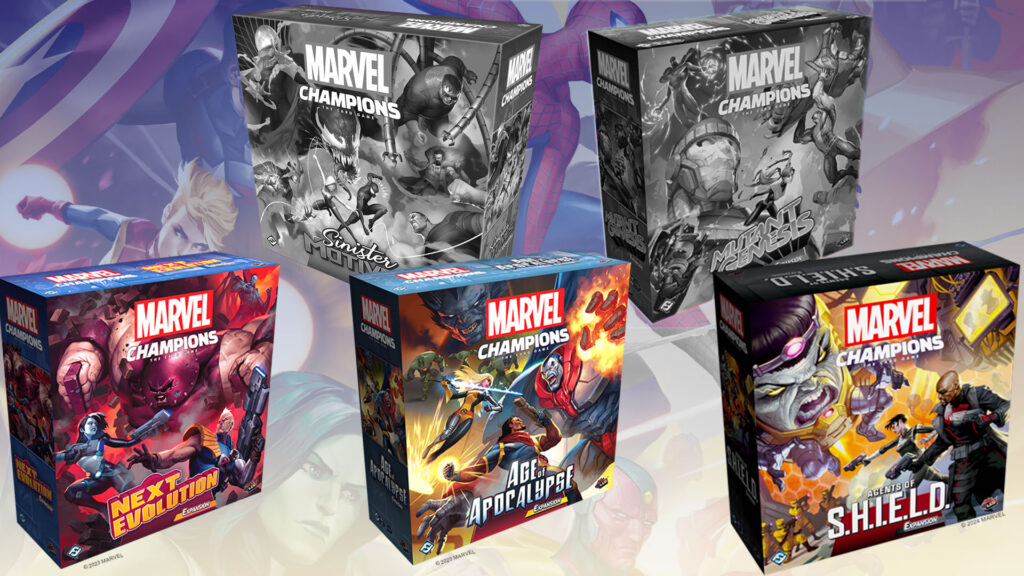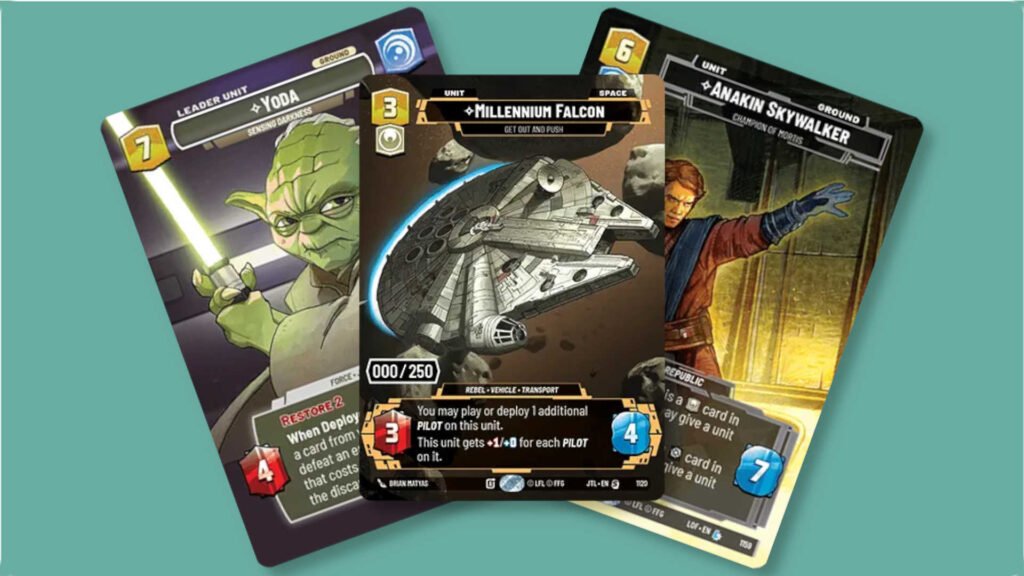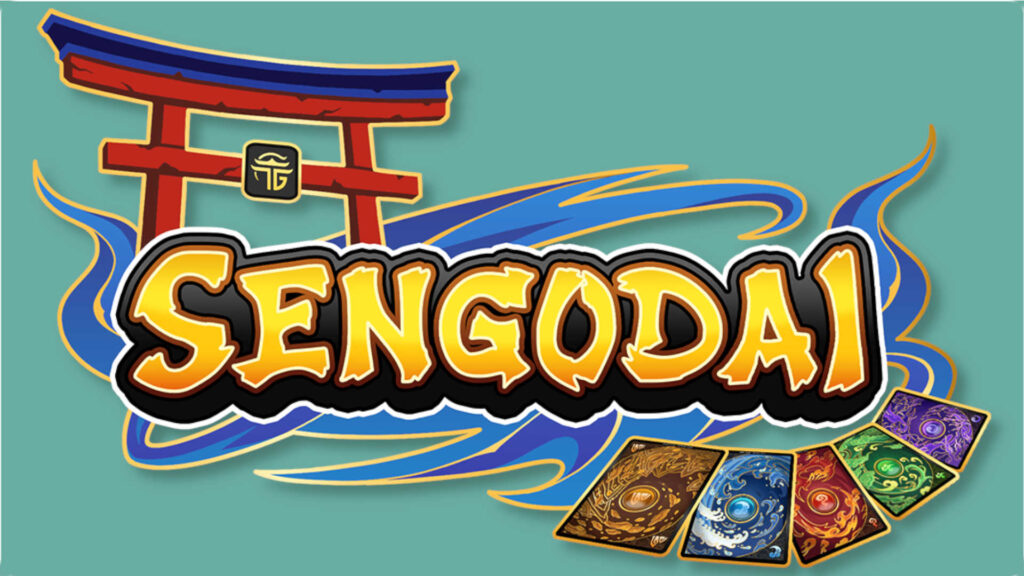Images courtesy of Fantasy Flight Games
On February 6th, 2025, Fantasy Flight Games did a live stream fireside chat talking about changes coming to their Living Card Games (LCG) Marvel Champions and Arkham Horror.
Confirmation of delays on Marvel Champions‘ Agents of S.H.I.E.L.D. and Arkham Horror‘s Drowned City releases were given, along with some insight into the future release cadence of both games. The largest change discussed was future implementation of a “Current Environment” and a “Legacy Environment” in the company’s cooperative LCGs. This means that they will no longer be infinitely printing products, cutting the print run down to two or three years, in what was implied to be a floating timeline.
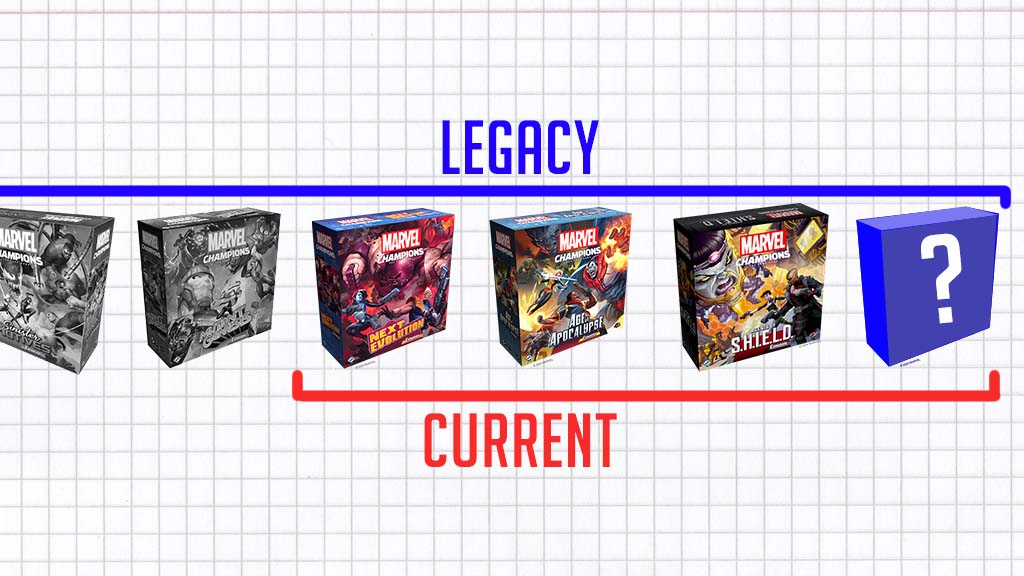
Scenario designs for both games will concern themselves with the pool of cards available in their Current Environments. With the Legacy Environment being cards fully compatible with the entire history of the game, but not setting the power level benchmark for what Fantasy Flight Games needs to design to.
From a new player perspective, this is a pivotal choice that will maximize the growth of these games, but hindering those with a completionist mind set. From an enfranchised player perspective, this changes how they can approach their respective games. Purely Legacy play will be no holds barred and Current will set limitations.
For content creators, the floodgates are about to burst open. But to understand where we’re going, we need to understand where we started.
Table of Contents
ToggleThe Existing Model for Living Card Games
The initial release model of 2016’s Arkham Horror provided some of the player cards with the first two scenarios of an eight-part campaign. Then, subsequent releases over the course of the coming year would provide a scenario and a swath of new player cards. As a more campaign focused game, new content was coming out monthly. This allowed players to get their bearings and acquire new cards that enhanced what they were doing, over the course of the campaign. But this also meant that each new scenario needed to be available for the continued life of the game.
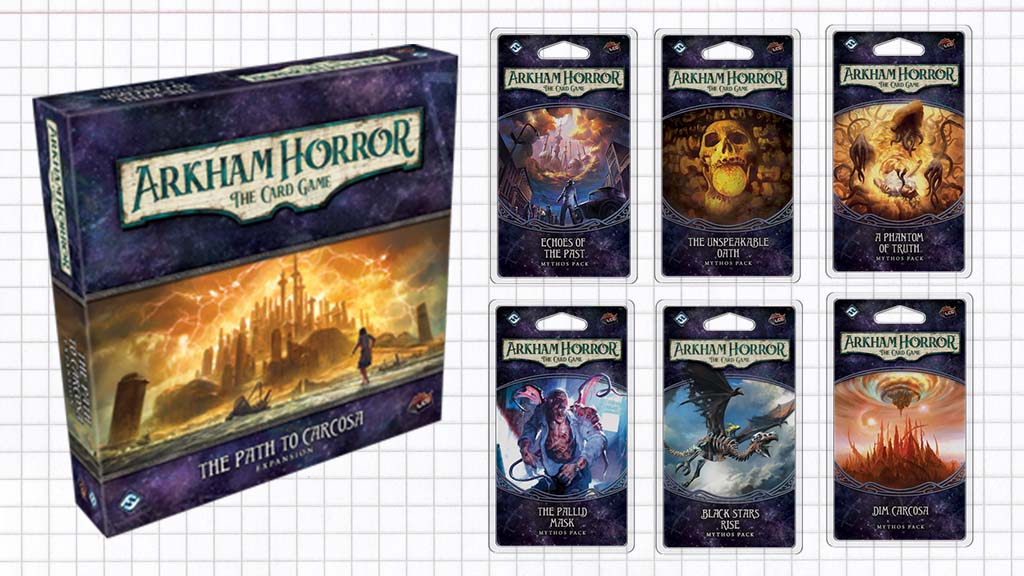
The release model of 2019’s Marvel Champions benefited from the lessons learned in previous LCGs. From day one, multiple scenarios were packaged in one place, with the player cards being housed within scenario boxes and preconstructed decks. And in 2021, Arkham Horror shifted and the entire campaign would come out as a single product, in tandem with a product that would provide all of the new player cards, effectively putting what Marvel Champions players would recognize as an entire cycle into two standalone products for the year.
But with nearly a combined fifteen years of two successful games, how do you meet current and future demand? Where does a new player looking to get into the game go after picking up a Core Set? And how do you balance new content? Eventually, a line needs to be drawn and product requires retirement.
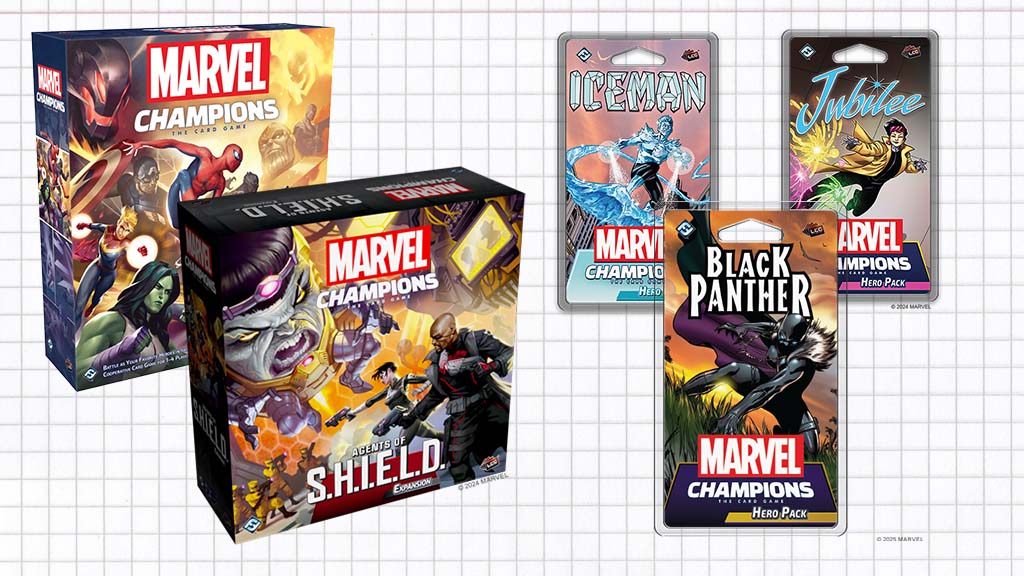
New Player Experience
From a new player perspective, product rotation means learning the game does not require learning the entire history of the game. As of early 2026, scenarios will be designed with the Current Environment card pool in mind and your starting point can be the newest products on the shelf. New players will be less likely to be intimidated by a wall of products in their local game store, because there will be twenty items instead of sixty. We all start out casual, and the game to a casual player is what we see on the shelf.
Eventually, causal players may discover the greater online community and hear whispers of the original scenario in which we fought Loki or the first iteration of Thor. But now there is the President Loki scenario that they really love and Jane Foster is Thor, with a much better kit. And frankly, one day their Current cards are going to retire and they’re going to need to adapt to the next wave of heroes.
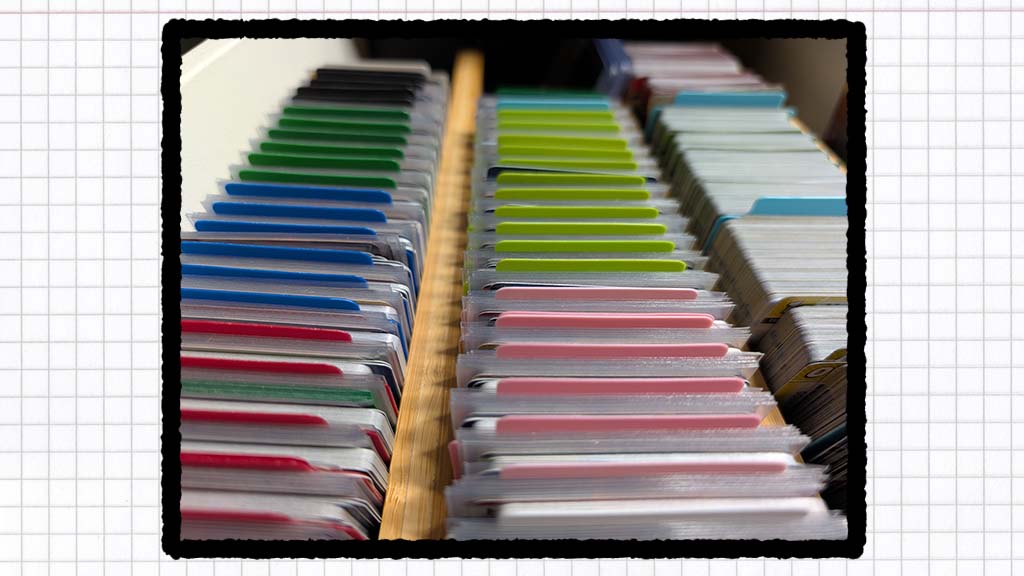
Being Enfranchised
Enfranchised players are going to feel two major impacts. One is that they’ll have some social navigating when dealing with players who may not have the same large card pool. They may need to restrict the tools that they use to the Current environment, as opposed to their Legacy card pool. Second, they may have to realistically deal with the redundant printing of existing cards. Fantasy Flight Games will undoubtedly be looking at cards that have fallen into the Legacy Environment but would be beneficial in the Current Environment.
This is admittedly a big change; it takes the Living Card Game model and adds tensions that many of us have experienced in existing trading card games. The difference, in my opinion, is that we’re not talking about card acquisition through blind card packs; we know where the cards that we’re looking for are housed. Unfortunately that may mean that we’re looking for cards in exclusively retired products.
But as an enfranchised player thinking about the perspective of a new player, it’s more important for the growth of both games that the onboarding be something that’s approachable. Additionally, scenarios should be as hard as they need to be, without needing to be indebted to the entire existence of either game. The Current Environment may lose some corner case exploits of scenarios, (e.g., a card from 2020 shuts down a scenario released in 2025) but gains a rotating supply of tools.
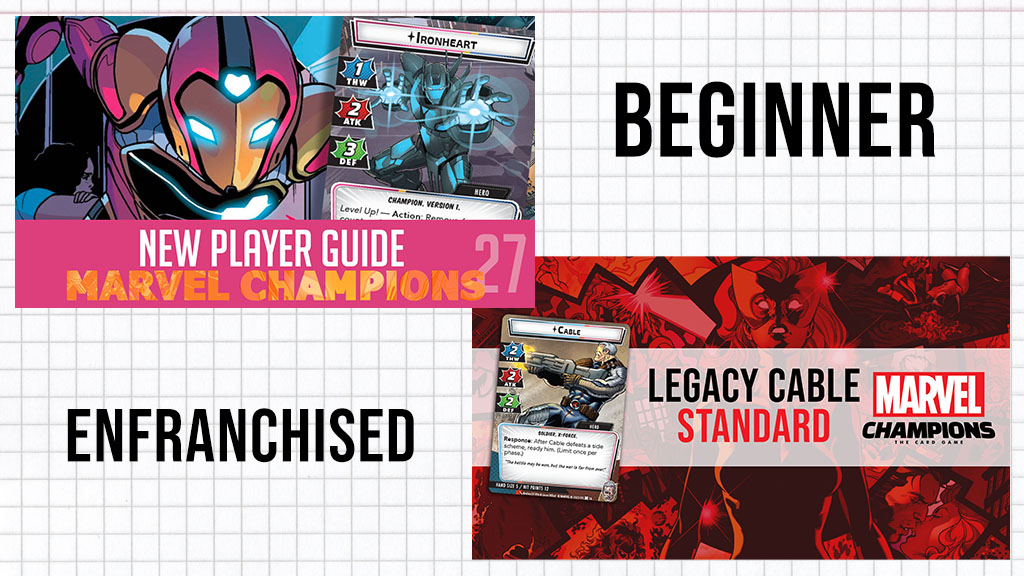
The Future Possibilities for Living Card Games
Lastly, there are the possibilities for current or aspiring content creators. Going forward, there is potential for creators to tailor their content to Legacy, Current, Rookie difficulty to Heroic, or all of the above. The way that you can structure a deck tech changes. The way that you cover campaigns changes. And it now becomes multifaceted in a way that we didn’t have the language for previously.
This is all going to take a lot of adjustment, but we’re on the horizon of a brand new life for these games. Play and discussion is no longer beholden to an entire history. From a new player perspective, it can be very daunting to see a creator talk about cards that you don’t have. But if the content can be labeled with a fresh or enfranchised niche, then that content will drive attention in a way that blanket discussions never could.
Just Enjoy Marvel Champions
Taking a step back and really looking at everything that led up to this change, it actually seems impractical that we somehow got this far into the history of these two games without a decision like this coming down the pike. At some point we have to accept that a decade of product will not always be available. If there’s a hero that is several years old that you haven’t picked up yet, maybe you have to ask yourself why you never picked that hero up to begin with.
These changes aren’t going to be codified until early 2026, so the hope is that in the next year we have time to acquire whatever we need to acquire before the next generation of players arrives. I look forward to that and I want to be as welcoming as possible, with a game that is as approachable as it can be.
For weekly videos, come join me over on my YouTube channel, TheMaskedHero. And until next time, thanks for reading.
Now is a great time to get into Marvel Champions, so head on over to my guide to learning the basics of the game.

